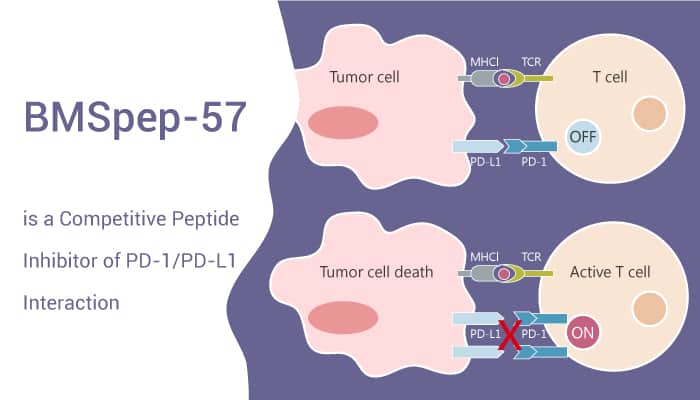Programmed cell death 1 (PD-1) is a cell surface receptor. PD-1 is highly expressed on tumor-specific T cells. It is a T cell checkpoint and plays a central role in regulating T cell exhaustion. Programmed cell death ligand 1 (PD-L1) is a trans-membrane protein. PD-L1 is a co-inhibitory factor of the immune response. And it can attenuate the host immune response to tumor cells. PD-1 is activated by the engagement of its ligands PDL-1 or PDL-2. Both hematopoietic and nonhematopoietic cells widely expressed PD-L1. However, PD-L2 is exclusively and inducibly expressed on professional antigen-presenting cells (APCs). PD-1/PD-L1 pathway controls the induction and maintenance of immune tolerance within the tumor microenvironment. However, cancer cells exploit this adaptive immune resistance mechanism of the PD-1/PD-L1 pathway to their advantage, and escape from the immunological surveillance of T cells. Therefore, inhibiting the PD-1/PD-L1 interaction is an attractive strategy for tumor immunotherapy.

BMSpep-57 is a potent and competitive macrocyclic peptide inhibitor of PD-1/PD-L1 interaction. It is a 15-amino acid-containing cyclic peptide. BMSpep-57 binds with Fc-PD-L1 with a KD value of 19.88 nM. At a concentration of 300 nM, it inhibits PD-1/PD-L1 binding up to 98.1%. In addition, BMSpep-57 inhibits PD-1/PD-L1 binding in a dose-dependent manner with an IC50 of 7.68 nM. Moreover, in peripheral blood mononuclear cells (PBMCs), BMSpep-57 induces high levels of IL-2 at 1 µM and 500 nM concentrations.
In summary, BMSpep-57 is a competitive peptide inhibitor of PD-1/PD-L1 interaction. And it triggers the production of IL-2 levels at certain concentrations.
References:
[1] Aravindhan Ganesan, et al. Sci Rep. 2019 Aug 27;9(1):12392.
[2] Yanyan Han, et al. Am J Cancer Res. 2020 Mar 1;10(3):727-742.